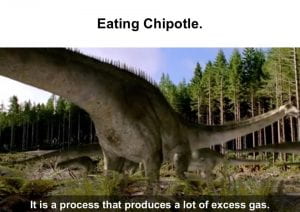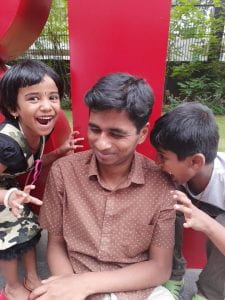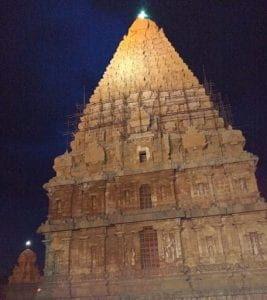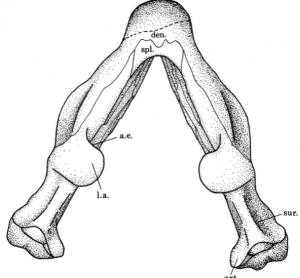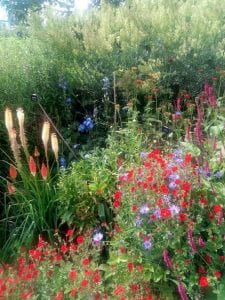Mistakes in my data file
Over the weekend I hoped to get some rest before my final week at Bristol. Unfortunately, during our data analysis we saw some data points that seemed to be very strange. When we checked the data I had collected we found some possible mistakes so my job over the weekend was to re-check the data.
This meant I was soon back to the tedious work that took up most of the previous week – remeasuring skulls, checking the formulas and so forth. But finally as I went into the office Monday morning I was sure my data file was ready for a final data analysis.
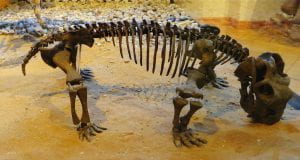
Monday and Tuesday was mostly spent adding in further codes so that we could produce disparity plots through time and contour plots. My disparity plots through time took into consideration all the functional characters to show how much they vary through time. For example, after the Permo-Triassic extinction we see a dip suggesting low cranial variation within anomodonts. On the other hand, contour plots were made for each functional character. The plots are the similar to the morphospace diagrams except these plots show areas of high and low values of the functional character within a morphospace plot.
However, just as I felt things were coming together there was yet another problem with my data file. For some of the species, I had taken measurements from different specimens. Although the calculations for my functional characteristics used data from the same specimen, I was told I needed to rescale. At this point many things ran through my mind. I was angry that I had made so many mistakes with my data file.* But more than that I was worried that time was running out. I had to go back to London on Wednesday for some commitments meaning I only had two full days left.
Handling stress
At such times of distress, I think it’s important to stay rational rather than let your mind wander about in panic. Firstly, its important to remember that ‘Our doings are not so important as we naturally suppose; our successes and failures do not after all matter very much’ (Bertrand Russell-Conquest of Happiness). Remembering this prevents us from getting too attached to our own ego. Secondly, there is no point in worrying about a matter when one is no position to do anything about it. Thus, as I attended to my commitments in London I stopped thinking about the project and when I had time to fix the rescaling issues I did so. This meant I didn’t get much sleep on Wednesday night but it did mean I had rescaled the measurements and on Thursday and Friday we could focus solely on making the figures even better.
Another discovery?

And so we did. On Thursday, we were able to add another functional characteristic that showed the relative development of the dorsal and lateral neck muscles (referred to as the OI). When we ran our contour plot for this functional character we found that the morphospace occupied by taxa which crossed the P-T boundary were in areas of high OI which meant they had well-developed dorsal neck muscles. This corresponded to feeding on higher vegetation which stumped us as it is an established fact that there was no such vegetation during this period. Consequently, myself, Suresh and Armin (who had both been helping with the coding) launched into a discussion on why this could be. In the end we came to an agreement that the strong dorsal muscles could have been used to uproot plants by pulling back on them.
Despite the data analysis coming to an end, Thursday was yet another late night. For the past week I had been going into the office at 10am, as I normally would, but getting back home at 8pm. Strangely though I did not feel drained. Being able to see how the hard work was leading to new theories and a window into a world 300 million years ago was enough to keep me going so when I got into my office for the final time on Friday I was slightly sad things were coming to an end.
Giving back
Nevertheless, Suresh, Armin and I had one last meeting scheduled in the afternoon with Professor Benton so I had to get some figures ready to illustrate our findings. The final meeting was just like all the others – casual, happy and informative. And just like all the previous meetings I left it with a greater confidence in myself. To show my gratitude, while I was in London I brought some presents for my supervisors along with a card. Unfortunately, I couldn’t find anything related to anomodonts so I had to give into dinosaur souvenirs!
The final day
The rest of the final day was taken up by transferring the code onto my laptop so I could use it after I left Bristol. This took a while as R had to be updated and the code had to be run again to check it worked. In conjunction with the past week, we found a few more issues and went late into the night to fix them.

By the time the code was fixed it was just Armin and I in the office. Suresh, who had helped me with most of the coding, had gone home. It was around 10:30pm when we finished. The whole building was empty and darker than usual since some of the lights had been turned off. As Armin escorted me to the buildings exit we talked about the next steps. He repeated what was said in our meeting with Professor Benton – that the project could be published and had the potential to be a high impact paper. He also reassured me that if I couldn’t write it up by the deadline, which we had decided to be April 2020, that I was to inform him so that they would be able to write it. The only drawback would be that I would no longer be the primary author. Then we talked about staying in touch via Skype and email. After that we said our goodbyes and I walked out of the Life Sciences Building in Bristol for the final time.
*Later on, when I got back to UCL, I found out that its normal to re-edit the data file many times over the course of a project.



